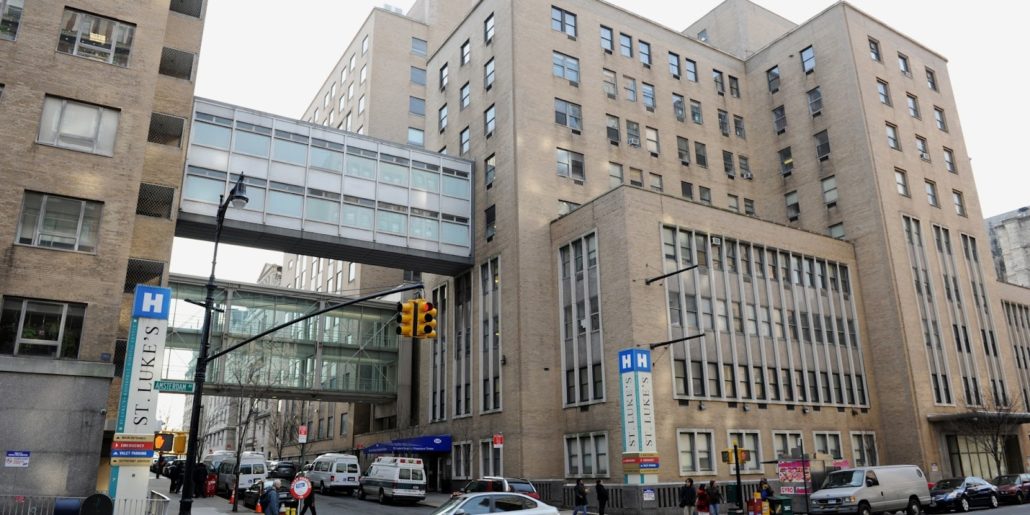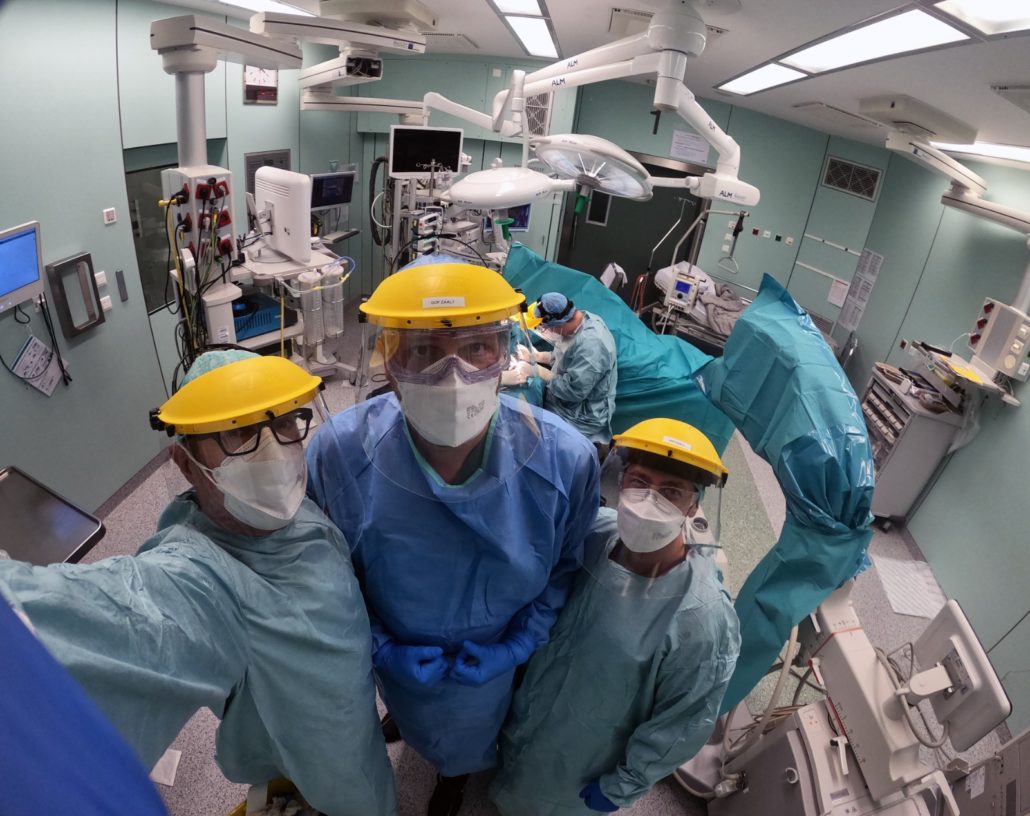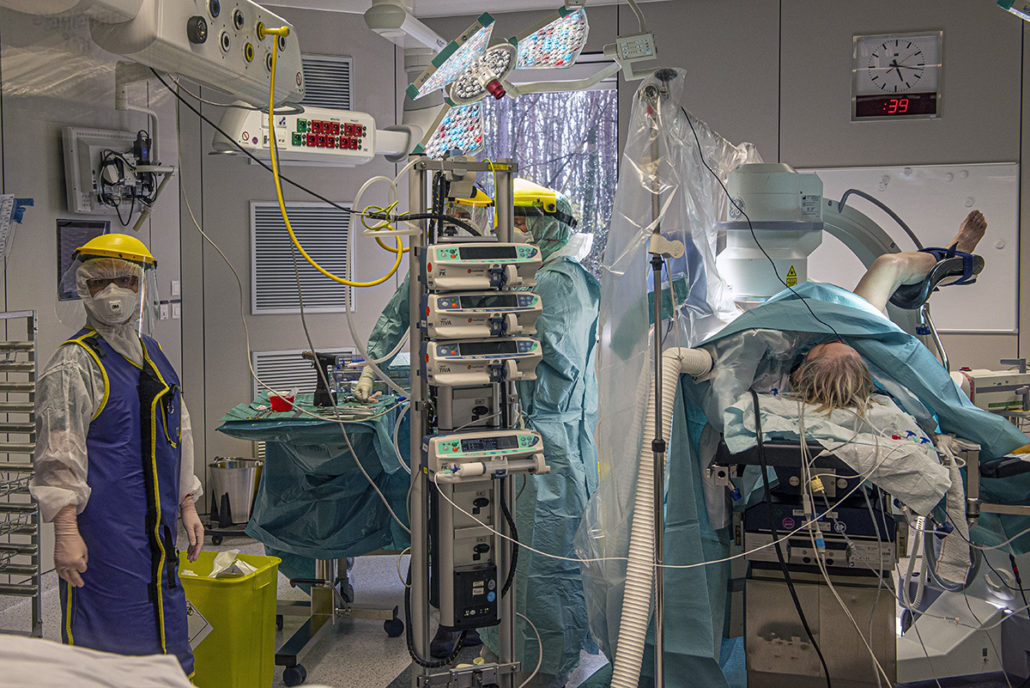Most people do not understand what anesthesiologists actually do. As a matter of fact, until I became an anesthesiologist in training, an anesthesiology resident, I did not fully understand that myself. Anesthesiologists are always in the operating room, or ICUs therefore, they somehow live a secret life away from most other doctors. Early in my career, I thought I wanted to be an internist and cardiologist-electrophysiologist. But one night when I was on call as a resident in Internal Medicine at St. Joseph’s Hospital in Paterson NJ, I had a chance to work with anesthesiologists during a resuscitation. That was the night that changed everything for me; I dropped my contract for a cardiology fellowship and took up the post as a resident in anesthesiology at St. Luke’s-Roosevelt Hospital in New York. And that was one of the best professional decisions I have ever made.

Historic St Luke’s-Roosevelt Hospital (1896), birthplace of nerve blocks (WIlliam Haselt), Mc Burney appendicitis sign (1894), the world-famous “Syms Operating Pavilion” (1892), and the clinical grounds of the New York School of Regional Anesthesia (NYSORA 1994-2015)
I started my education in clinical medicine as a resident in Internal Medicine at Seton Hall School of Graduate Medical Education. We rotated between three hospitals – St Joseph’s in Paterson NJ, St. Michael’s in Newark, and St. Elizabeth Hospital in Elizabeth, NJ. This was in the 1990s during the AIDS epidemic, and it was an amazing training where we were on the front line with the sickest patients with AIDS, just like today with the COVID pandemic.

In and out of the operating room, anesthesiologists use their training and expertise to form teams that facilitate management of patients before, during and after surgery, among many other critical functions they serve in healthcare.
But one night I was on duty at St. Joseph’s Medical Center in Paterson, NJ. As a senior resident, I would be in charge of the ICU, and admissions in the ED, and I would lead the resuscitation team in case of an emergency anywhere in the hospital. Often, the anesthesiology team would join when called to assist or when they were not busy with surgery. That night, sometime around 10pm, we received a STAT call for resuscitation on the cardiology ward in the post-cardiac catheterization unit. I left the ICU and ran to that unit on the 5th floor with my two junior internal medicine residents. As we entered the room, we had to make way as there was a frenzy of activity. The nurses were desperately trying to insert an IV that worked, the respiratory therapist was trying, without success, to mask-ventilate the patient, a man in his sixties. The patient’s cheeks were bulging and, with no circulation, his skin was already blue and cold to the touch. We were all taking turns to perform chest compressions, but, without IV access – no easy task in a patient with overused veins – and without an airway, we were fighting a losing battle.
This is the 1990’s when there were no electronic or digital monitors for EKG; it was recorded on a continuous roll of paper, which we coined the “rhythm strip”. Now it was indicating some kind of pulseless electrical activity meaning that there was no blood pressure or pulse that could be palpated. The three of us, Internal Medicine residents were actively discussing what the EKG rhythm could be, while the patient, in the absence of IV access, the means to administer resuscitation medications or a route to establish ventilation and introduce oxygen was rapidly sliding towards death. Precisely at that moment, I heard voices from the hallway: “Excuse us, Excuse us!” I looked up towards the door and saw, to my enormous relief, that the anesthesiology team had arrived. A senior anesthesiologist and his resident made their way to the head of the bed, and asked a few brief, pertinent questions: “What’s the history here?”
We filled them in quickly: “63- year old male, history of coronary artery disease, post-cardiac catheterization, and stent placement this morning.” They absorbed the information without pausing as they prepared to secure the airway. I vividly remember the senior anesthesiologist guiding the junior trainee to intubate and deftly placing the breathing tube in seconds. I was mesmerized by the seamless, automatic life-saving maneuvers of the professional anesthesiologists, and intrigued by the unique training that enabled them to roll out such highly-skilled procedures in a heartbeat.

Anesthesiologists are true life savers. Their training equips them with unique knowledge and skills necessary for critical care, and life-sustaining procedures, and medical management.
Breathing tubes in place, the anesthesiologists fired out instructions to the attending staff on how to perform more effective chest compressions to re-establish circulation. Within seconds, the patient’s outcome had turned around. The oxygenation quickly turned his blue pallor pink as the resuscitative measures took effect. Without let-up, the anesthesiologist asked if we needed help with IV access – as multiple attempts had been unsuccessful. “Yes please!” we responded, overcome with relief and gratitude!
Barely two minutes had elapsed before the anesthesia team had successfully placed a large IV into the central venous system, creating access to the circulation, and quickly followed with the administration of critical medications for resuscitation. From that moment, the EKG quickly changed to a sinus tachycardia as the circulation, pulse and blood pressure were re-established. After securing the endotracheal tube and central line, the senior anesthesiologist then asked if they could help with anything else? Awe-struck and humbled, we managed to weakly mumble “No, thank you.” as the saviors packed up and left to go back to duty in the operating room. As they were leaving, the patient was resuscitated, the respiratory therapist was busy connecting the breathing machine according to the anesthesiologists’ instructions, and we, the Internal Medicine team, continued our discussion on how the patient’s rhythm was looking now.
I was very busy on duty that night, and did not have time to process what had actually happened. But when I finished my shift and began driving home, it hit me hard; how the swift action of the anesthesiologists had saved this patient from almost certain death in minutes. Although we internists were equipped with all the necessary theory and the understanding of the pathophysiology available to us, we simply did not possess the critical skills needed to save this patient’s life.
From that night, I knew that I wanted to be a life saver; like these guys, the anesthesiologists. And although I loved internal medicine, and cardiology in particular, I was acutely aware that I would never again feel fully satisfied practicing medicine without these skills, without being a lifesaver. My mind was made up: I resolved that I would become a real lifesaver: I wanted to be an anesthesiologist!